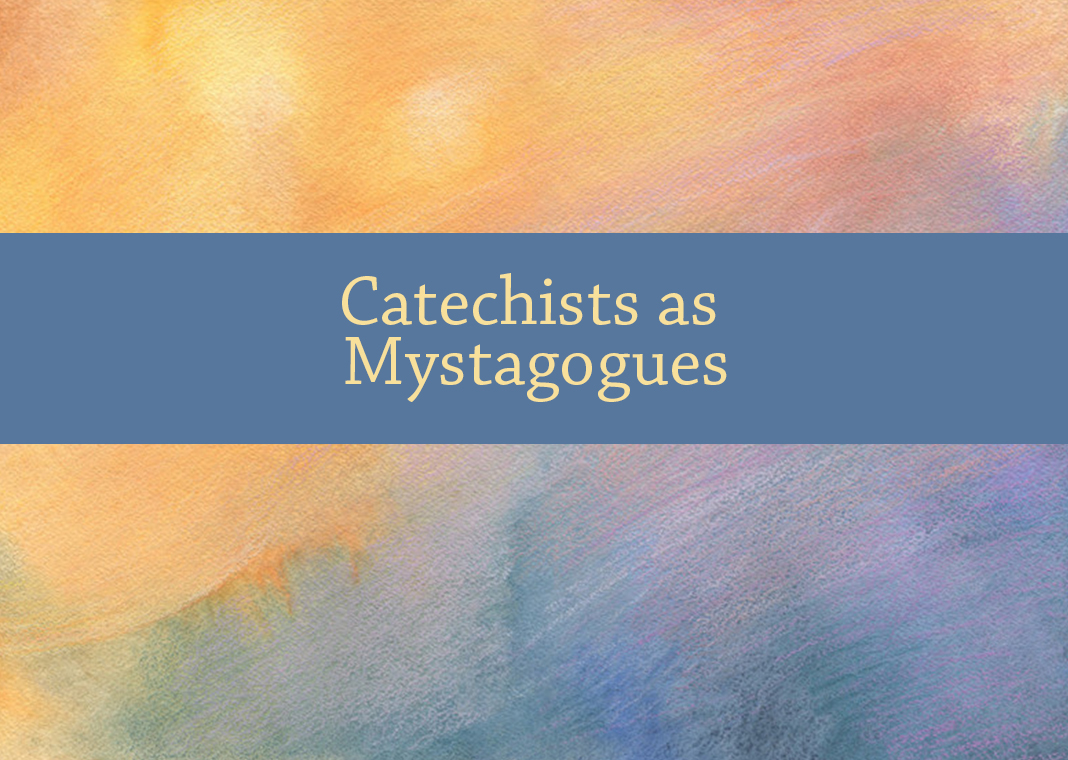
There’s a big difference between telling someone, “I can tell you a lot about __________” (Fill in the blank with the name of any celebrity.) and “I’d like to introduce you to ___________.” (Fill in the blank with the same name.) Often faith formation has been thought of and approached as a version of the first option above: a vehicle for telling others about Jesus Christ. This boils down to the teaching of a subject. Catechists, however, are not teachers of a subject. We are mystagogues, which means that we facilitate encounters with Divine Mystery. Jesus Christ is not a subject. Jesus Christ—the Risen Christ—is a Person who is mysteriously present, and our job as mystagogues is to facilitate encounters with him.
The Directory for Catechesis reminds us that, “Catechesis communicates the heart of the faith in an essential and existentially understandable way, bringing each person into contact with the Risen One.” (64a)
So, how do catechists facilitate encounters with “the Risen One”? Much the same way we would facilitate an encounter with any significant living person:
- we describe why this person is significant (what one has done or accomplished and is doing or accomplishing),
- we share how this person has impacted us personally,
- and then we invite them to speak to one another.
As mystagogues, we need to pay much more attention to the last two bullet points! It is not enough to teach about the significant things Jesus did 2000 years ago—as crucial as that is for us to do. We need to share how our lives have been impacted by encountering Jesus Christ personally (give witness), and we need to create opportunities for those we teach to speak to and listen to Jesus Christ—the Risen One who is in our midst. We do this in a number of ways, inviting learners to:
- prayerfully listen to and reflect on Scripture.
- experience silence and listen for God speaking to them through thoughts, feelings, desires, memories, and other non-verbal ways.
- imagine themselves walking with or sitting with Jesus and entering into conversation with him (guided reflections or reflective prayer).
- express themselves to the Risen One using a language of mystery (sign, symbol, ritual, music, movement, gesture, etc.).
- engage in works of mercy and then helping them reflect on how they encountered the Risen One in those they have served.
- praise the Risen One, who is in our midst.
For too long, we have approached faith formation as an experience in which we invite Jesus into our midst and then make him sit in the corner while we talk about him. If we truly believe that the Risen One is in our midst, then our approach to every session we lead should be, “I’d like to introduce you to someone I know, someone who has changed my life. I’d like to introduce you to Jesus Christ.”
That’s what a mystagogue does!


Joe makes an important and very critical distinction here between “mystagogue” and catechists/teachers who simply talks “about” Jesus. This distinction is helpful in that it ensures that catechists contextualize their method. Thanks Joe!
Thanks for your thoughts, Thomas!
We mustn’t forget that mystagogy is, by definition, about initiating people into mystery – through the power of the sacramental life. All of post-baptismal catechesis is about breaking open the meaning of what it means to have been baptized – to have “put on Christ” and to accept the challenge to keep the Christ-light burning in our lives.
Thanks, Joyce! May we all keep the Christ-light burning in our lives!
I can’t believe, in all these years of being catholic, I’ve never heard the title, “Risen One” or “Risen Christ”. Thank you Joe!
Thanks, Yong! I guess that makes my point! 😉
I was told to teach only the meat and potatoes, just the basics no more. A child of God needs more the extras, the more they know, the more they realize they don’t know the more they want to know about God His love and forgiveness.
Thanks for sharing, Aileen. I hear many catechists say they are under pressure to teach only doctrine (meat and potatoes) which is unfortunate because prayer is not fluff…it is not an “add-on” or a “side-dish”…it is one of the four pillars of our faith and of the Catechism of the Catholic Church!